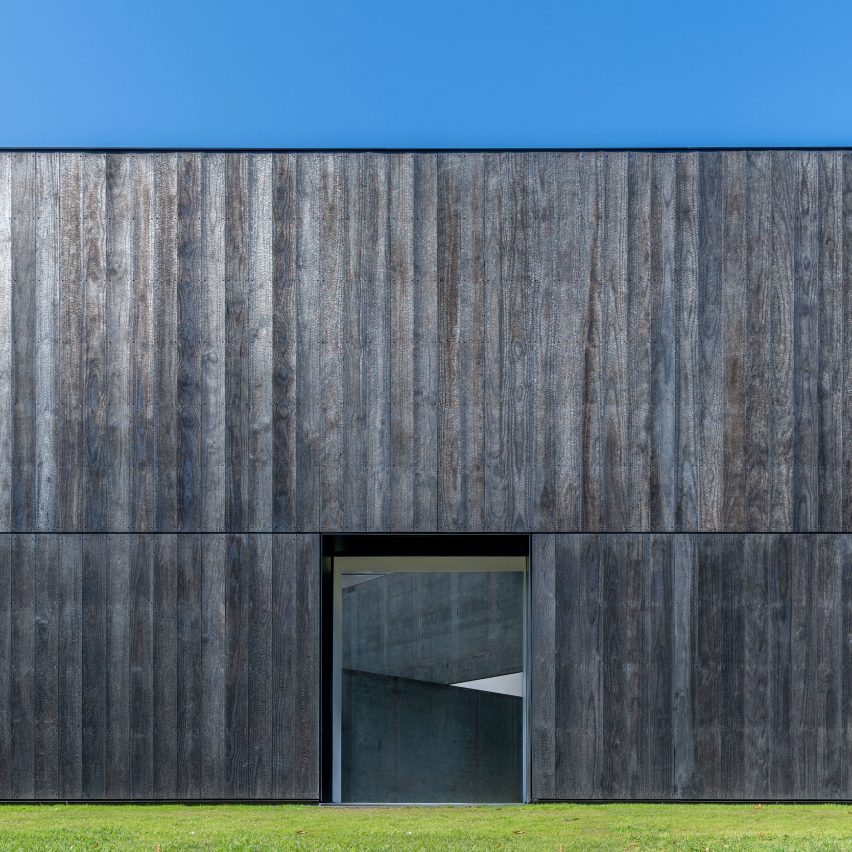
OLI Architecture has installed a Japanese-inspired cabin on an estate in Westchester, New York, to house the Richard Serra sculpture London Cross.
LX Pavilion was designed as a bespoke container for the two 15-ton plates of weathering steel that form the huge sculpture.
Though it looks very simple from the outside, behind its charred Accoya wood exterior is a white-cube gallery space, sized to match the proportions of the space where the piece was first exhibited in 2014, at the Gagosian Gallery in London.
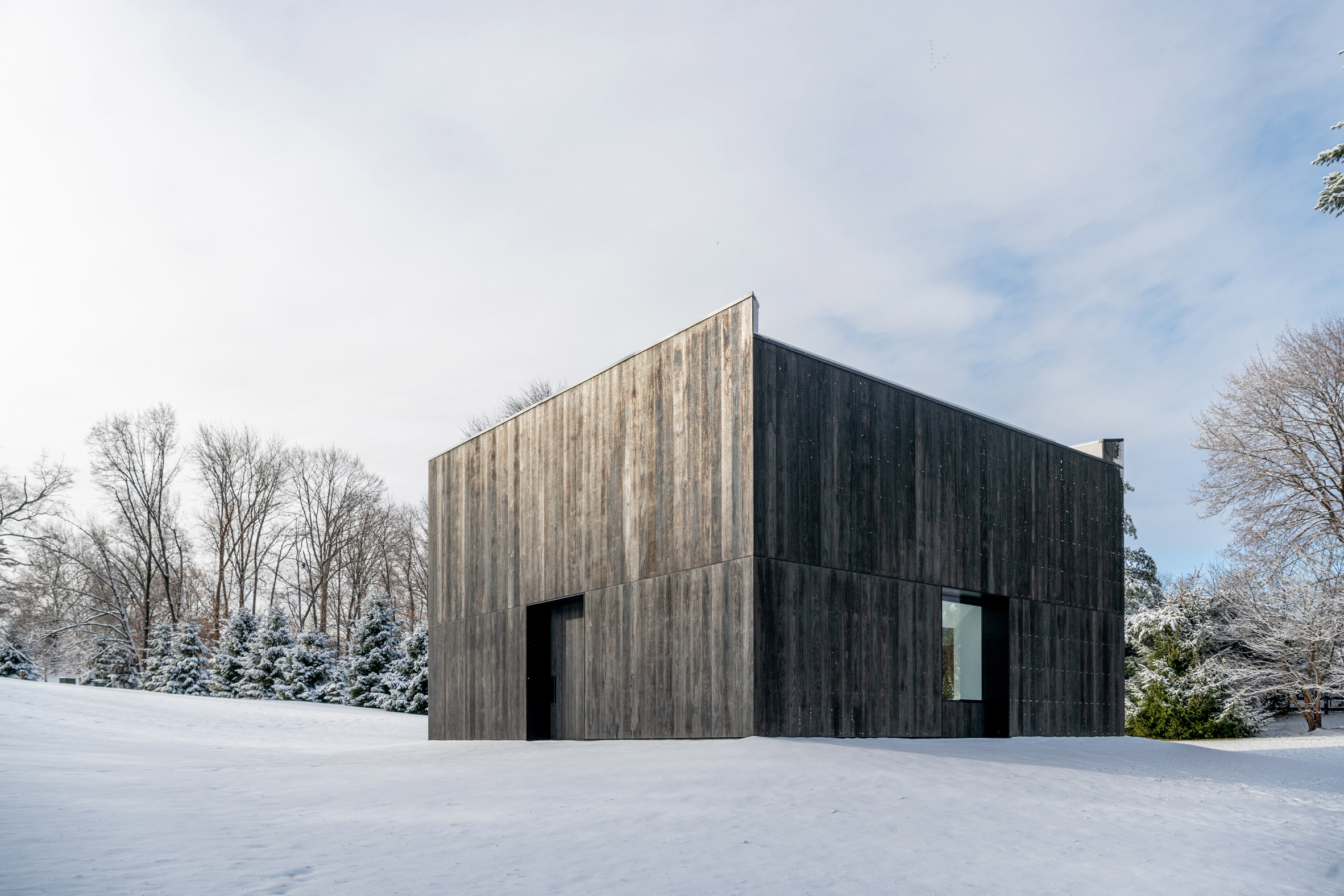
The building provides a permanent home for the sculpture, which is now owned by a private collector.
OLI Architecture founder Hiroshi Okamoto said the design developed following a walk in the estate grounds with the artist, Richard Serra, and his wife, art historian Clara Weyergraf.
Arriving at the base of a grassy hill, adjacent to a patch of woodland, they all agreed that this should be the location for the piece. They even marked out the exact position together.
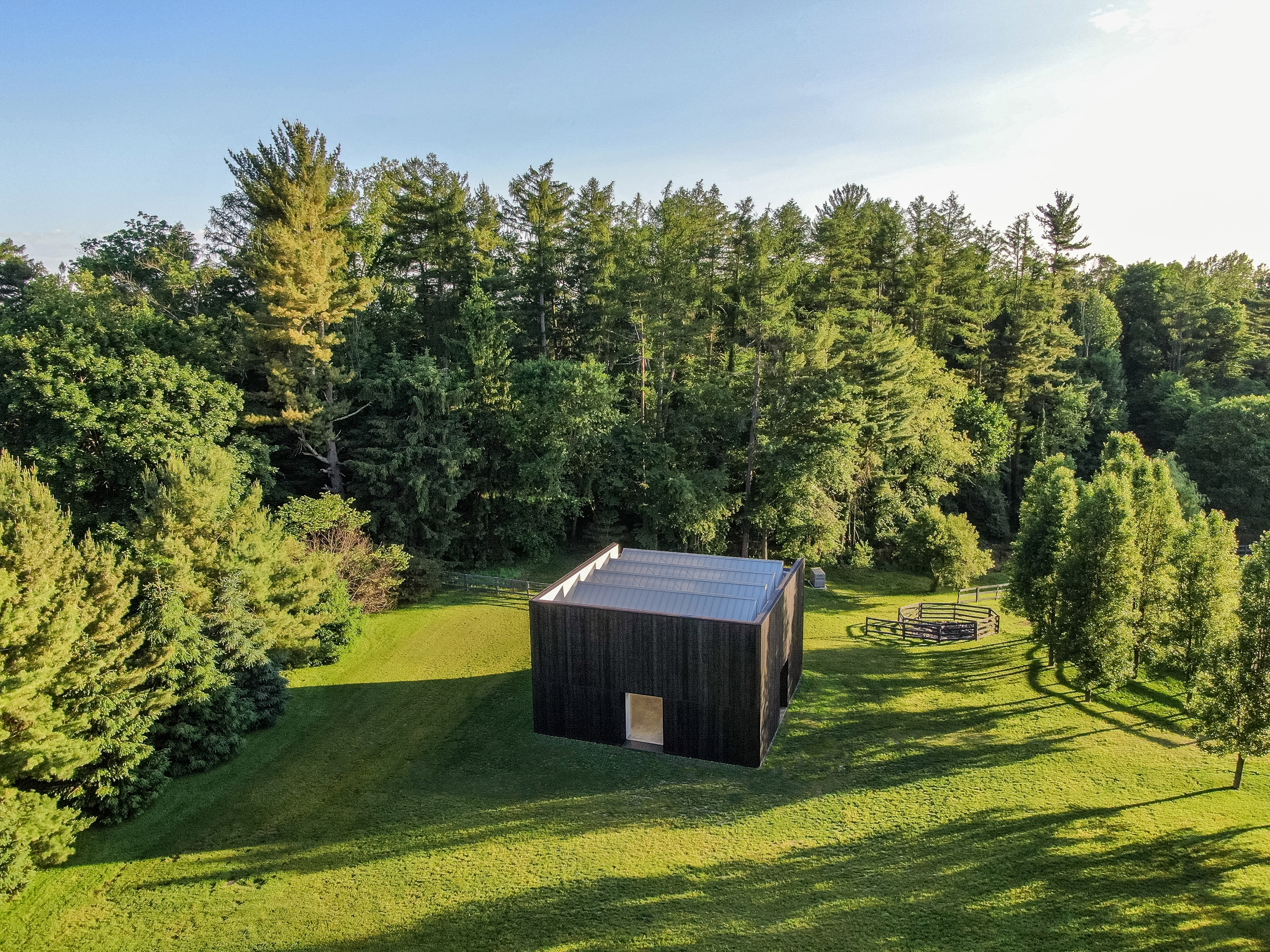
This setting formed the starting point for the LX Pavilion's form and materiality.
"Since the sculpture and the walls supporting it are considered as one, the interior plan dimension was prescribed, and we agreed that a singular pavilion that proportionally fit into the context was appropriate," Okamoto told Dezeen.
"We also agreed that the pavilion facade should be clad in wood to fit into the surrounding context and buildings."
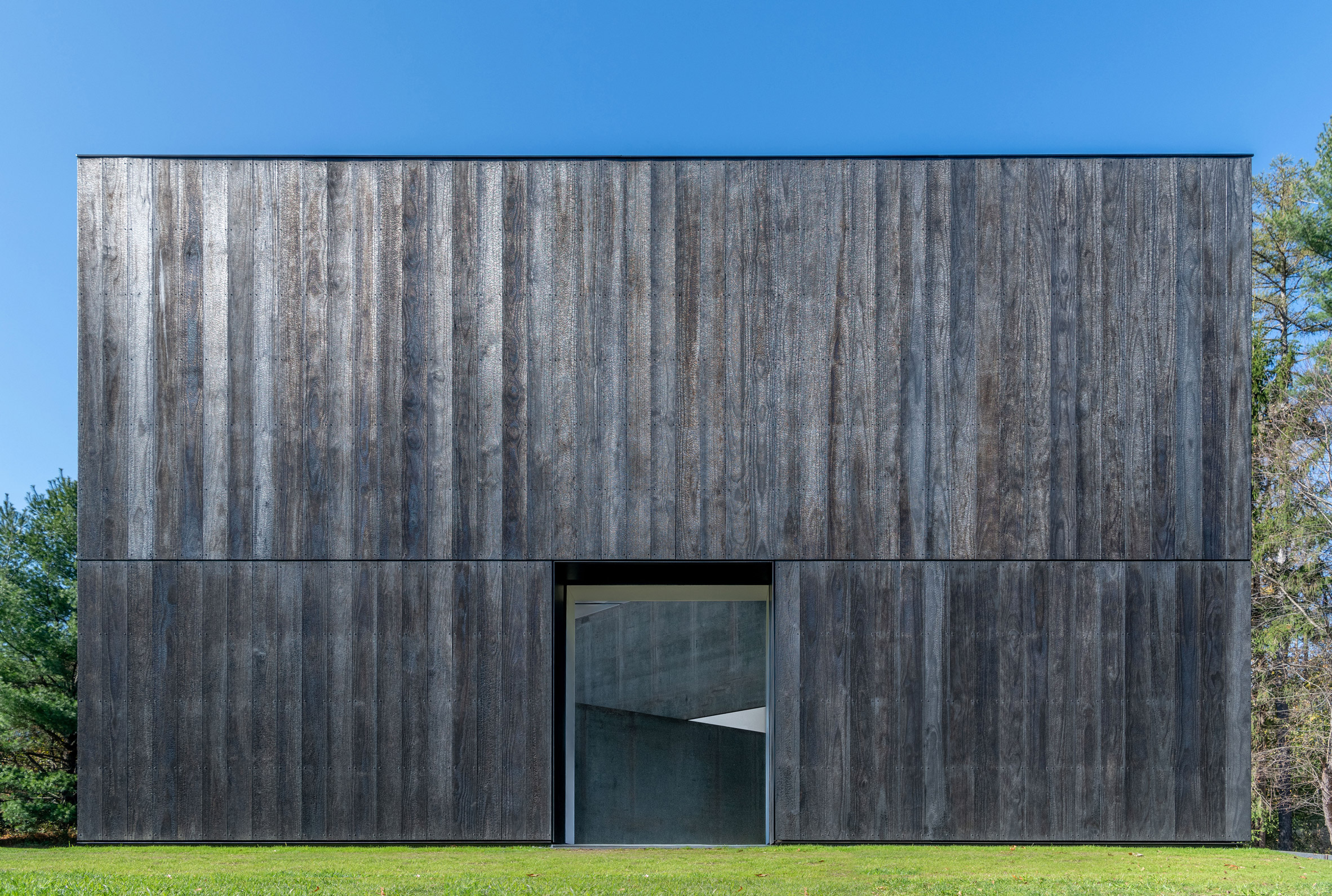
The desire for a wooden building led the team towards Japanese construction techniques.
Serra sent Okamoto a book about Japanese wood construction and joinery that he thought could inspire the design, while Okamoto came up with a concept to blacken the building's exterior using the Japanese wood-charring technique Shou Sugi Ban.
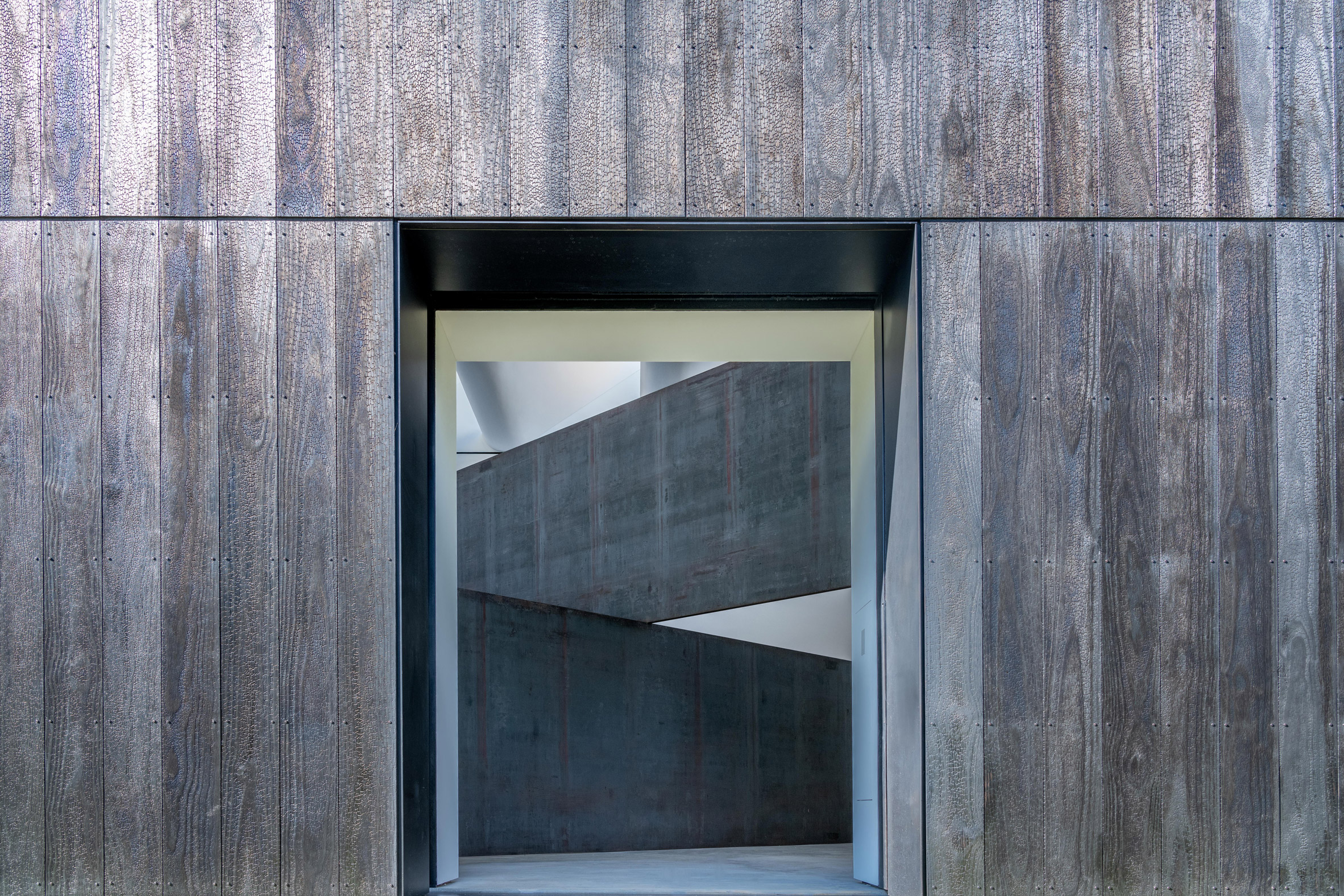
This technique, also known as yakisugi, is traditionally used as a method of preservation for the wood. It seemed a good fit for a building with highly valuable contents.
"The visually rich char and the silver patina that builds up with sun exposure were very appealing to us," said Okamoto.
"Since the project's intent was to protect the plates, we wanted to emphasise the temporality of the project by juxtaposing the weathering of the pavilion's facade."
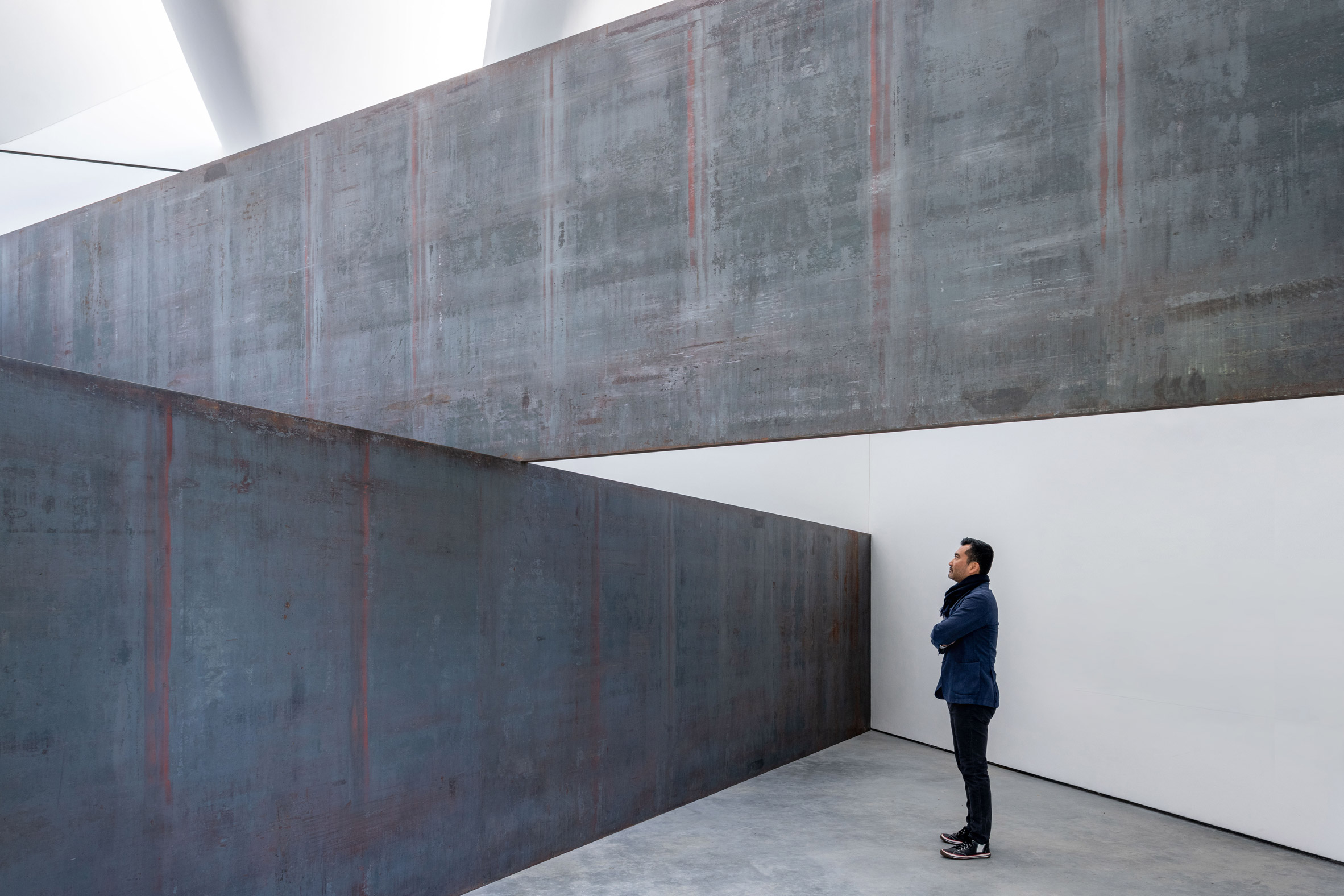
This approach gives a textural but monolithic quality to the building's exterior. This is emphasised by the building's three entrances – each one is located in the centre of an elevation, so the building looks the same no matter what side you approach from.
Inside, the artwork takes centres stage. One steel plate runs along the floor, forming an impenetrable wall that makes one half of the space invisible and inaccessible. The other plate is suspended overhead, with seemingly little support.
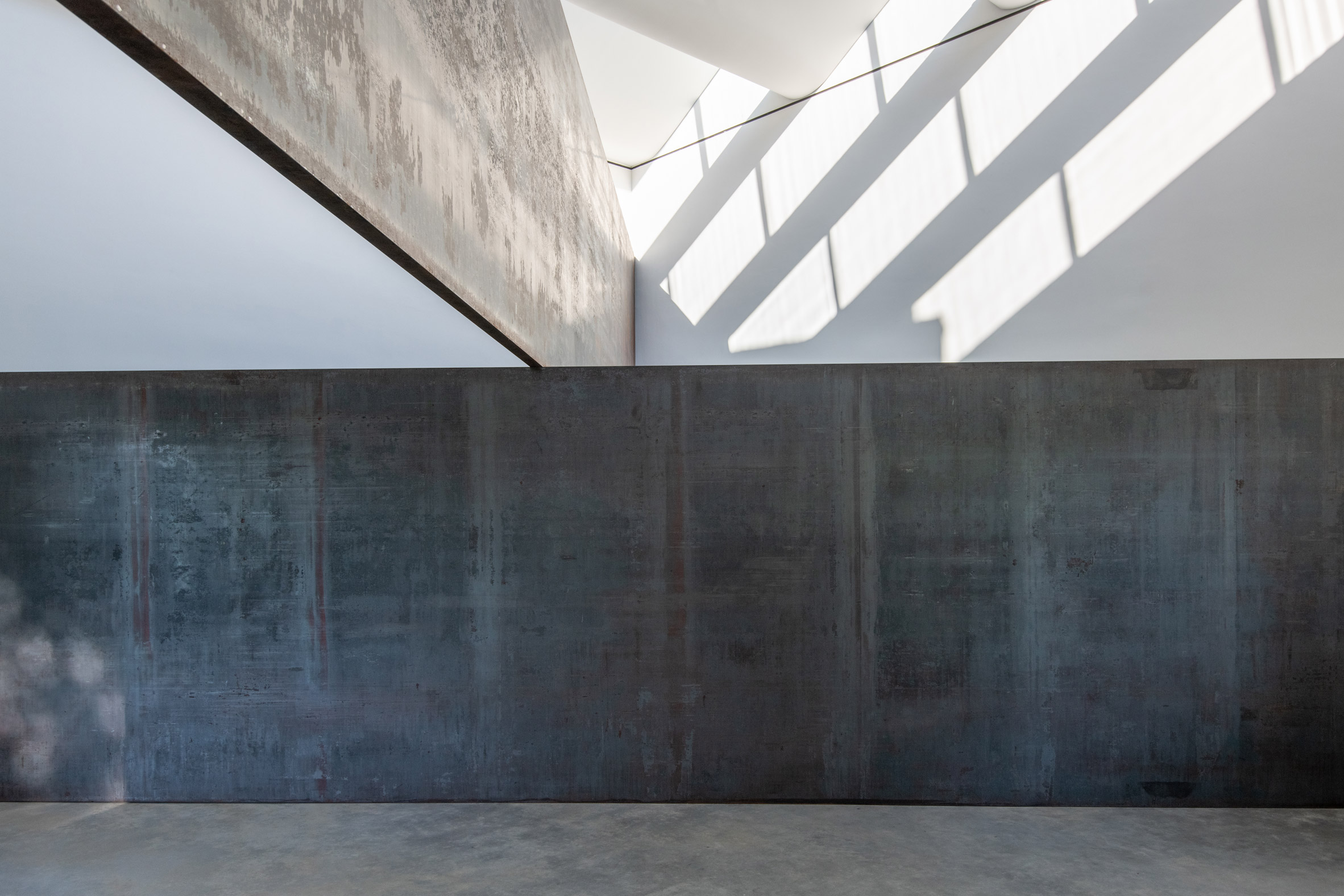
Key to the success of the interior is the control of lighting. While the client was keen on a day-lit space, Serra didn't want to see shadows falling across the steel surfaces.
As a result, Okamoto and his team had to develop a roof of north-facing sawtooth skylights that consider the changing light conditions throughout the year.
"The design team, using sophisticated modelling and environmental analysis software, mapped the yearly sun pattern to position the angle of the pavilion to minimise shadows," said Okamoto.
The result is a space that carefully balances the controlled nature of the gallery with the feeling of being outdoors.
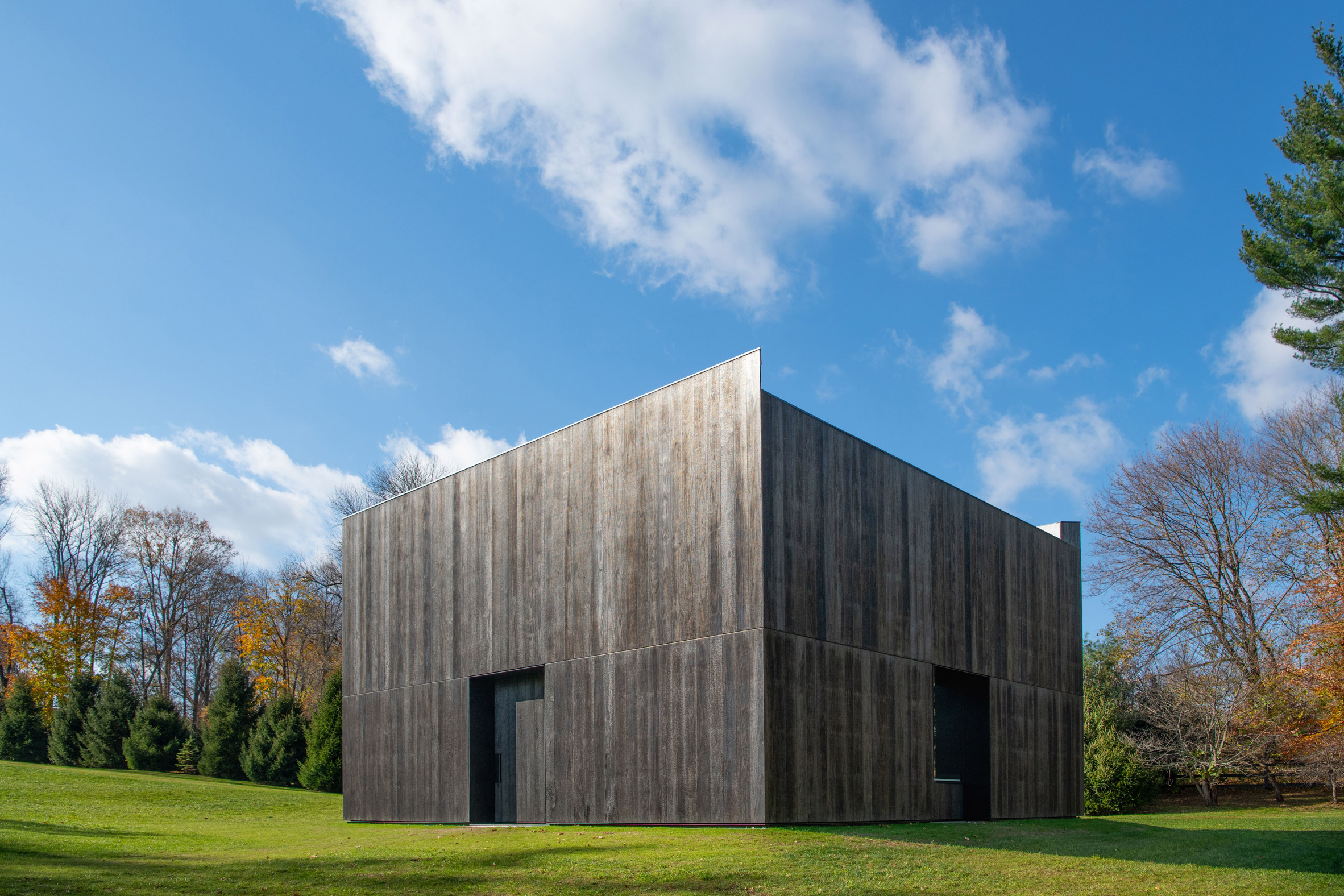
Before founding New York-based OLI Architecture, Okamoto previously worked in the office of Pritzker Prize winner IM Pei.
Among the projects he worked on was the Museum of Islamic Art in Doha, which is where he and Serra first collaborated. Okamoto worked with the artist to create a granite pier cantilevering over the water for the display of the piece Sculpture 7.
As with that piece, Okamoto hopes that the space he has created for London Cross help to elevate to the physical experience of the artwork.
"I believe the purpose-built building and environment affords an opportunity of heightening this experience," he added.
Photography is by Albert Cheung.
Project credits
Architect: OLI Architecture (Hiroshi Okamoto, Dongshin Lee)
Day-lighting consultant: Carpenter Norris Consulting (David Norris)
Skylight engineer: David Kufferman PE Structural Engineers (David Kufferman)
Structural engineering: LERA Consulting Structural Engineers (Elias Matar, Sami Matar)
MEP Engineer: Dagher Engineering (Elias Dagher, Daniel Nielson)
Geo-technical: Kellard Sessions Consulting
General contractor: APEX Projects
The post Richard Serra sculpture finds permanent home inside charred timber LX Pavilion appeared first on Dezeen.
from Dezeen https://ift.tt/37i6aVR
No comments:
Post a Comment